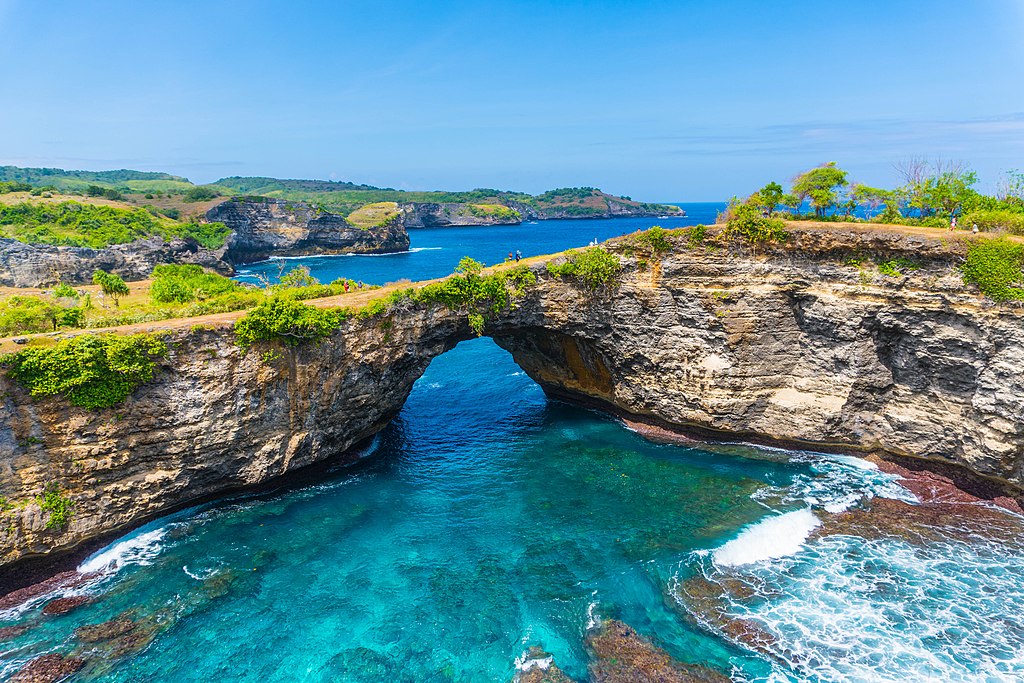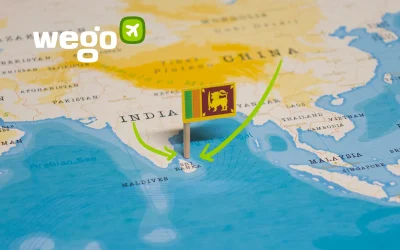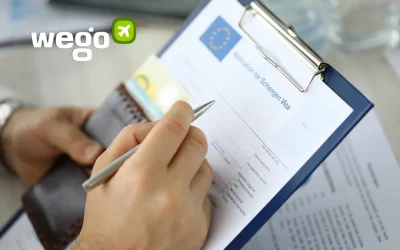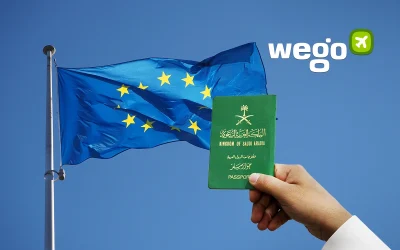This article is reviewed regularly (on a monthly basis) by Wego’s editorial team to ensure that the content is up to date & accurate.
Last updated 9 November 2020
Countries in Asia are reopening their borders gradually in the last quarter of 2020, amidst numerous delays and canceled reopening news. The COVID-19 scenario is varied and so are the travel restrictions throughout the continent. Which countries are now allowing foreign tourists in Asia? What is the state of border reopening and commercial flights in Asia? As Asia treads into a cautious stage of reopening, here is the complete list of countries that are now open for tourism.
Since entry restrictions in Asia are being updated every now and then, keep visiting the page for the most updated guidelines on traveling to Asia.
Country Selection Menu
Open for tourism
Bahrain
Among the countries in West Asia, Bahrain opened its borders on September 4 to visitors from almost all countries with e-visas and visa on arrivals. This is in addition to the previous categories of travelers (Bahraini citizens, residents, and GCC nationals) who were allowed entry into the country.
Travelers no longer need to stay in quarantine for 10 days. Instead, upon arrival, you will have to take a COVID test and stay in isolation until the results arrive. You will need to shoulder the cost of the test, which is around 30 Bahraini Dinars (USD 80). Those who wish to stay for more than 10 days will need to take a second test before staying and exploring further.
From October 24, all restaurants and cafes are allowing all for indoor dining with health precautions. While parks, beaches, and other public places are open, a gathering of more than 5 is not allowed.
Jordan

© Wikimedia Commons
In the Hashemite Kingdom of Jordan, international flights have resumed services from September 8 and thus open for tourism with strict testing guidelines. It is mandatory for all passengers to fill out the Visit Jordan form.
Countries have been divided into green, yellow, and red categories depending on the rate of infection. But irrespective of your country of departure, you must present proof of a negative COVID-19 PCR certificate (test no older than 72 hours prior to the scheduled journey). In addition to this, you will be subjected to a COVID test in Jordan on arrival, the price of which is 40 Jd, and must be paid while submitting the Visit Jordan form.
Whether you need to quarantine or not will be decided by your country of origin. You must quarantine at home for 7 days and 14 days respectively if traveling from a yellow or red country. In either case, you have to take a COVID test at your own costs on the seventh day (for those in 14-day quarantine, a test also on the 14th day).
You must also have the Aman app downloaded on your mobile device. Once you adhere to these few guidelines, you can go about exploring the wonders of Jordan, including the ancient city of Petra, dotted with rose-red sandstone structures, which is also one of the seven wonders of the world and has recently been ranked as the ultimate travel destination by Lonely Planet.
Lebanon
Lebanon is a rich confluence of ancient traditions and modern practices, of cultures of the East and the West, thus posing as a land of many wonders for those travelers looking to enjoy the fascinating hospitality of the Lebanese. Currently, Lebanon as such does not bar travelers from any country to enter through its international borders.
International flights are operating to and from Rafic Hariri (BEY) airport in Lebanon, albeit with diminished capacity. Entry will be denied if you are traveling without a negative COVID-19 test certificate (test should not be older than 96 hours). As declared by the Lebanese Ministry of Public Health, all travelers have to fill out a health declaration form online COVID-19 MOPH PASS before departure.
Tourists and travelers from Iraq, Syria, Turkey, and all African countries must submit 50 USD to the airlines as the cost of the COVID test on arrival in Lebanon at any authorized lab. Until the results arrive, you must stay in quarantine for 48 hours (the time extends to 72 hours for travelers from Iraq only).
For visitors from all other countries, you have the option to choose between a COVID test or a quarantine stay. COVID-19 test must be done latest by 3 days after arrival at your own expenses. Alternatively, you can stay in quarantine for 10 days at home or in a hotel.
You should also have travel health insurance that covers the costs of COVID-19 treatment for the duration of your stay (applicable for non-Lebanese travelers only).
Maldives

© Fshoq! blog
For beach lovers, Maldives is indisputably a paradise on Earth. If a luxury resort stay that comes with the taste of Asia is on your mind, Maldives has opened its international borders for tourists from all over the world. And it also comes with a free 30-day visa on arrival!
Fill out the Traveler Health Declaration (THD) 24 hours before arrival. A negative PCR certificate is mandatory and random testing will also be conducted at the airport. No quarantine is required unless you test positive anytime during your visit. When in Male city, Hulhumale, Villimale, Thilafushi, and Gulhifalhu, take note of the curfew hours.
Pakistan
Pakistan offers a unique cultural experience amidst its enigmatic landscape of towering snow-capped mountains, glaciers, and vast meadows. Since August 8, the Gilgit Baltistan region of this off-beat tourism destination is now open for its domestic and international tourists with a “no mask, no tourism” policy. While COVID-19 cases are still being reported, the country has seen a declining trend in the numbers with a successful flattening of the curve.
From October 5, the country is welcoming visitors from all countries. Civil Aviation Authority’s SOPs divide all countries into categories A and B. While travelers from category A may enter with no restrictions at all, category B travelers must carry a COVID-19 test report taken no earlier than 96 hours before departure. No mandatory quarantine is in place in Pakistan for arrivals.
Before you set out on your journey, you also need to have the Pass Track app downloaded on your mobile device. Without having your details enters, you won’t be issued a boarding pass (exceptions are children below the age of 12, VIP international delegates, and passengers with disabilities). If found symptomatic on arrival, you’ll need to take an RT-PCR test at any lab of your choice, the results of which usually arrive within 48 hours. You’ll also be paying around 6,000 to 9,000 PKR.
Find detailed travel guidelines for Pakistan here.
Turkey

© Pixabay
Turkey, the confluence of the East and the West, has been welcoming international tourists since June 12. Numerous countries currently have scheduled and non-scheduled flights to Turkey. As such, its new travel guidelines do not pose many restrictions on visitors. There is no requirement of quarantine or mandatory tests unless you are showing symptoms.
Wearing masks in public places is mandatory in 81 provinces of Turkey, with a fine of 900 lire (122.5 USD approximately) for those who won’t. Take note of any curfews and restrictions that may be introduced locally.
More on Turkey travel restrictions here.
United Arab Emirates
The UAE was one of the first countries in Asia to reopen its borders for international tourism.
Dubai welcomed its first batch of international visitors on 7 July 2020, thereby marking the reopening of the UAE for tourism. Having any health insurance, the COVID-19 DXB app downloaded on your mobile, Health Declaration Form, and negative RT-PCR test certificate (96 hours validity time) are mandatory guidelines for all visitors in Dubai. You may also need to undergo an additional test at the decision of the health officials at the airport. With the Dubai Assured stamp, you can expect to be in safe hands as long as you too practice COVID-19 health precautions.
In August, Sharjah, too, started welcoming foreign tourists with its Sharjah Safe for Tourism‘ stamp, launched by the World Travel and Tourism Council for reassuring travelers. As in Dubai, Sharjah also mandates any health insurance, a mandatory negative COVID-19 test report, submission of a health disclosure form, and a second COVID test on arrival while you quarantine in a hotel until your results arrive.
For entry into Abu Dhabi, in addition to a mandatory COVID test certificate, you need to self-isolate for 14 days. You will receive a GPS wristband and be registered on the quarantine system during your stay. For a safe travel experience, the Abu Dhabi Government has endorsed the Go Safe Certification.
More on Dubai reopening here.
Uzbekistan

©Wikimedia Commons
A country steeped in ancient culture and history, Uzbekistan is a true gem of Central Asia. It’s time to walk on the Silk Road trade route in the country, now that Uzbekistan is open for tourism for all countries. In fact, Uzbekistan promises travelers (who visit as part of a group tour led by a local guide) a sum of $3,000 (£2,400, A$4,400) in compensation if they become infected with COVID-19 during their trip.
Depending on where you have stayed in the past 10 days, you may be required to quarantine on arrival since Uzbekistan has a traffic light signal system for entry restrictions. Visitors from ‘green’ countries (includes China, Thailand, Malaysia, South Korea, Georgia, Hungary, Latvia, and Japan) are neither subjected to any quarantine or tests.
When traveling from ‘yellow’ countries, a 14-day self-isolation period on arrival must ensue. Visitors from the red category of countries have to undergo quarantine for 14 days at facilities decided by the authorities. For travelers from both these categories of countries, a COVID-19 negative RT-PCR test taken before 72 hours of arrival is mandatory.
Partially open
China
Once an epicenter of a global pandemic outbreak, China successfully bounced back to normal life, and its capital Beijing is now receiving tourists from a limited number of countries.
If you are a resident of Canada, Thailand, Cambodia, Pakistan, Greece, Denmark, Austria, or Sweden, or a Chinese national with valid Chinese Residence Permits, you can enter China for travel or tourism purposes. However, this reopening comes with a mandatory 14-day quarantine at government-run facilities for travelers. This is in addition to the mandatory COVID-19 test certificate that travelers need to be carrying in order to enter China.
Once the 14 days of quarantine are over, you will need to test negative for COVID-19 again to get a release. For the next 7 days, you must still be reporting your temperatures to the designated health official.
If any flight ends up carrying more than five cases of COVID positive cases, its inbound services would be banned for a week. More than 10 cases and embargo will extend to four weeks.
Find detailed travel restrictions and reopening news in China here.
Kyrgyzstan

©Wikimedia Commons
The landlocked country of Kyrgyzstan or the Kyrgyz Republic has been allowing tourists from 32 countries since August 21 (Uzbekistan was added to the list later on). These countries are believed to a controlled epidemiological COVID-19 situation within their borders and thus you can travel to Kyrgyzstan now if you are from these countries.
For entry, a negative RT-PCR certificate is now mandatory. You have to bring the certificate in paper form and the test must not be older than 120 hours.
Nepal
The picturesque land of Nepal with white snow and rugged cliffs of the mighty Himalayas as far as the eyes can behold is a holiday destination that mountain lovers cannot keep at bay. Nepal is gradually reopening, even as it has delayed its reopening for general international tourists indefinitely.
Amidst rising concerns over the increasing number of COVID-19 cases, Nepal plans on accepting tourists from a Green-list of countries soon. For now, only those visitors who wish to take part in Mountaineering Expeditions and Trekking are allowed entry into this small Himalayan country.
A special visa is required which you need to apply through the trekking agency you will be traveling with when in Nepal. You must bring a negative COVID-19 RT-PCR test report (no older than 72 hours) and stay in quarantine for 7 days before you can head out on your expedition.
An additional COVID test is mandatory for all travelers on the fifth day of the quarantine stay. Entry restrictions also mandate travelers to carry travel insurance of at least USD 5000 which will cover costs of COVID treatment.
Singapore

© Wikimedia Commons
Singapore is eyeing a rather slow reopening even when it is one of the few countries in Asia that have successfully arrested the spread of COVID-19. It has started reopening borders for international travelers from nearby countries from September 1. Although still largely closed for general tourism, it is allowing entry of foreign visitors from the green listed countries: China (from Nov1), New Zealand, Brunei, Australia, including the State of Victoria, and Vietnam.
Entry is allowed based on the green/Fast Lane arrangements, the Air Travel Pass, or with special prior approval. You can enter Singapore without any mandatory quarantine from any of the green-listed countries. However, you must get a negative PCR COVID test report on arrival. Unless the results arrive, you must wait in any hotel accommodation for around 48 hours.
Discussions are in process to open the borders for more foreign tourists on a reciprocal basis. Have the TraceTogether app downloaded on your phone.
More information on travel to Singapore here.
Thailand
After much speculation, Thailand has finally opened for international tourists. Travelers who are willing to undergo a mandatory quarantine stay followed by long stays in the country for travel and tourism can now enjoy Thailand’s pristine beaches and happening nightlife.
Thailand is issuing a 90-day Special Tourist Visa could be extended twice, for 90 days each time, thus allowing a total stay of up to 270 days, valid till September 2021. Only low-risk countries are eligible to apply for this visa. The application fee for the visa is 2000 baht.
You must show proof of booking for alternative state quarantine (ASQ) in accredited hospitals/hotels for a 14-day quarantine stay on arrival in Thailand. At the end of your quarantine period, you need to undergo a COVID test and if it comes out negative, you can go about touring the country.
It is mandatory for all travelers to carry a Medical and Travel Insurance with a minimum of 100,000 USD coverage for COVID-19 medical treatment. The insurance should also cover at least 400,000 THB for other non-COVID medical and accident expenses.
The country is considering a reduction in the number of days of quarantine from 14 to 10 for low-risk countries and the possibility of a travel bubble with China for quarantine free tourist visits.
More on Thailand travel restrictions here.
Delayed Reopening/Reopening Soon
Indonesia (Bali)

© Wikimedia Commons
Bali was set to reopen for international tourists from September but has now postponed the reopening indefinitely, as was confirmed by the Bali Governor Wayan Koster on reopening of the island. The plans were foiled owing to the surging cases on the island. Travel enthusiasts may now have to wait at least until 2021 to enjoy a much-awaited beach holiday in Bali.
More on Bali reopening here.
Japan
Japan currently allows entry of foreign nationals for business and other essential travel from travel bubble countries with 14-day mandatory quarantine. However, general tourism is still restricted. Reports claim that the country will open its international borders by spring 2021, ahead of the Tokyo Olympics which was earlier declared postponed.
Once tourism restarts, visitors may need to purchase private medical insurance prior to their trip. Within Japan, however, there are no restrictions on domestic travel with numerous tourist attractions such as Great Buddha in Kamakura and Tokyo Disneyland all open and accepting visitors.
More on Japan quarantine and travel restrictions here.
Sri Lanka

©Wikimedia Commons
After tossing around with reopening plans (it initially had eyed an August 1 reopening), Sri Lanka still continues its ban on foreign tourists. Not only foreign citizens, but nationals and residents of Sri Lanka also cannot enter the country unless they contact the Sri Lanka High Commissioner to take special entry permission.
All non-essential travels are prohibited including the ban on repatriation flights. The Bandaranaike International Airport (CMB) is now accepting only special flights. The next reopening date has not been announced yet with chances that it might not be opening until 2021 at least.













